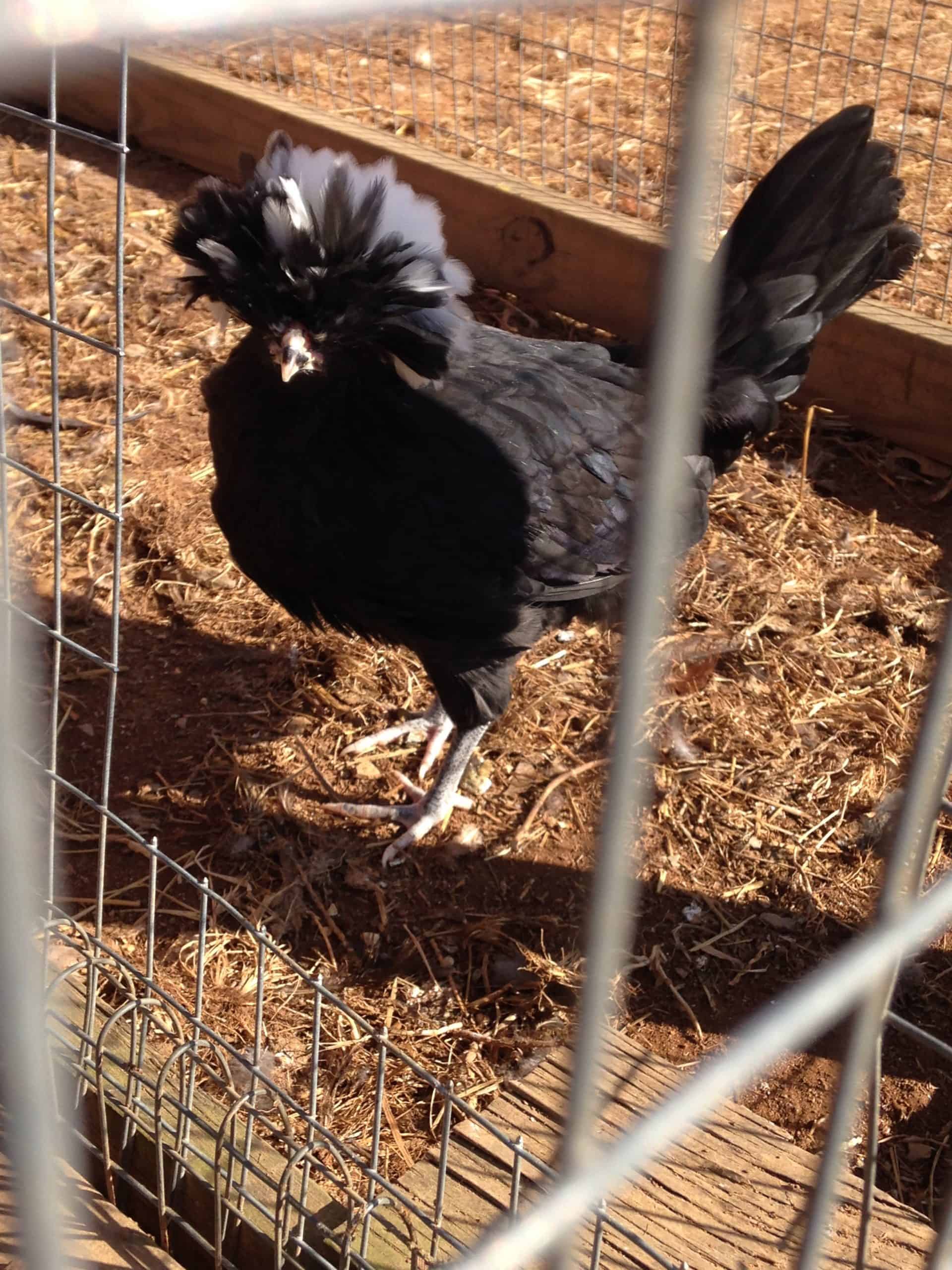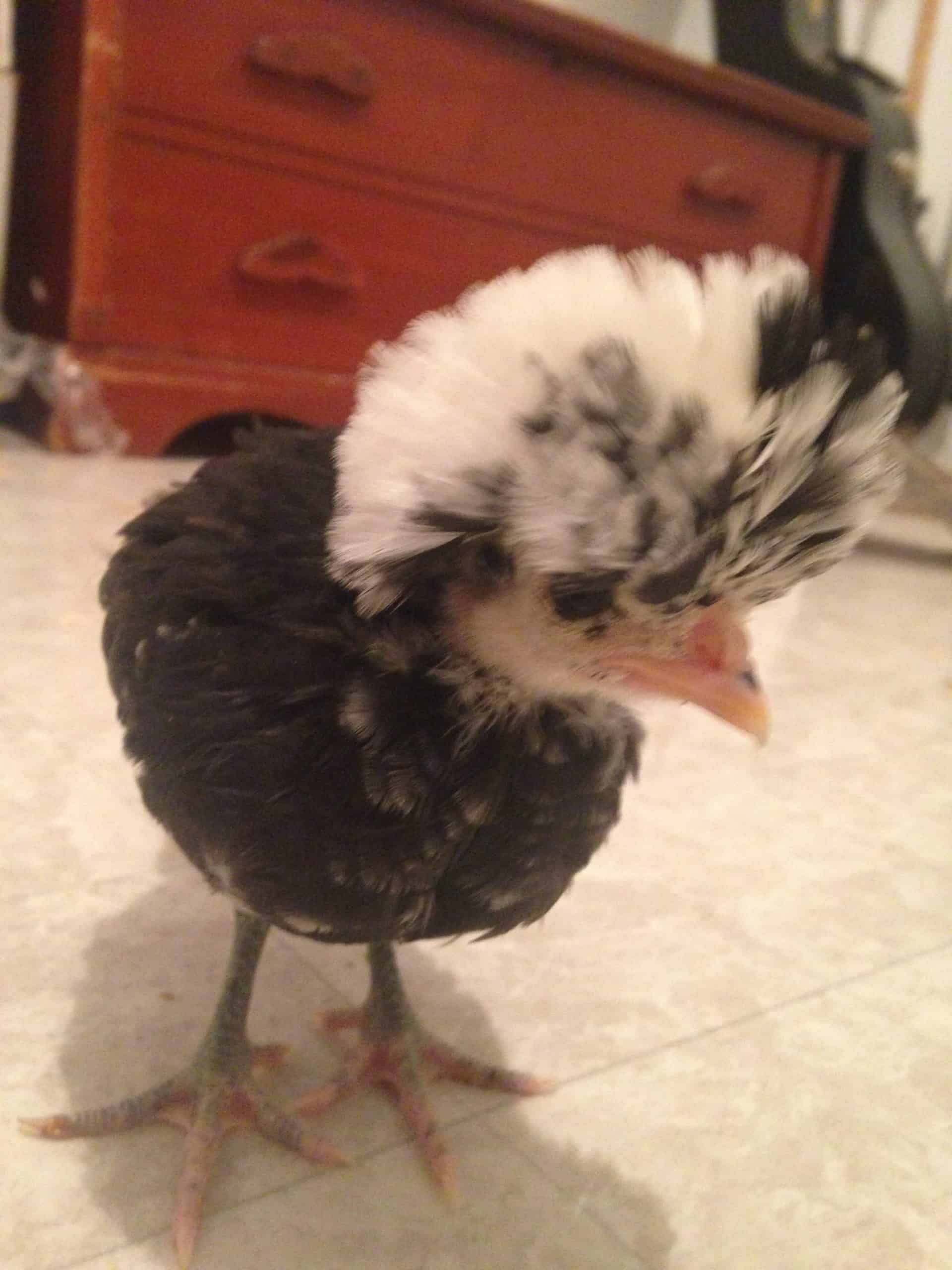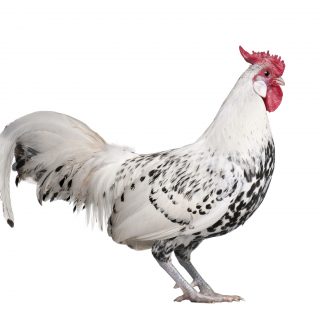Have you ever seen a Polish chicken before? With their friendly personalities, docile behavior, and crazy "hair style" they make a wonderful (and eye-catching) addition to any backyard flock!

The Polish Chicken is one of those breeds that you have to see to believe; specifically for the very large and impressive crest of feathers on the top of their head. They also come in a wide variety of colors and sizes. This is not a large breed of chicken and is more along the size of a Bantam breed. Originally from Poland, as the name implies, the Polish Chicken is primarily used as an ornamental or show bird. However, they will lay 2 or 3 small, white eggs a week or 150 a year.
But the details of this unique and mysterious breed do not stop there. Let's dive a little deeper into everything about the Polish chicken.
Everything About The Polish Chicken
As with any breed of chicken, it is easiest to understand them when you break their characteristics down into smaller segments. We have done this and made 4 categories; history and origin, what do they look like, what are they like (personality and temperament), and what are they used for (production, eggs, meat, etc).
Let's start with their history, as it is pretty interesting.
History and Origin
To start things off, the Polish chicken may not actually even be Polish in its origin. How's that for mysterious?
Obviously, when you hear the name, you assume that is where they come from. And, it is a working theory. However, there is very little documentation on the early days of these birds so it is not definitive.
Another working theory on their name is that it is derived from the Middle Dutch word pol which means "head". This is likely a reference to their dome shaped head or the ornate appearance of their head feathering, or crest.
Two of the most popular beliefs surrounding their appearance in Eastern and Central Europe is that they were either brought to Poland by Asian Mongols or other immigrants brought them to either Spain or Italy in the 1500s.
We do have evidence that the breed is a very old breed. Chickens that look very similar are seen in some paintings from the 16th century. There are also several Dutch and Italian paintings ranging from the 16th to the 18th centuries featuring what are obviously Polish chickens.
Need some help keeping your chickens health and care taken care of? Check out the Organized Chicken Keeper for an easy to follow system.
Breed & Variety
Polish chickens come in both large fowl and bantam sizes.
Large fowl are what we would consider to be a normal or standard size chicken. Bantam breeds are bred specifically to be a much smaller size. They generally retain the same physical characteristics just in a smaller package. You may see them referred to as mini chickens.
Polish chickens, whether large fowl or bantams, come in a couple of different varieties. They can be bearded, non-bearded, or frizzle. Although, the American Poultry Association (APA), considers frizzle to be a trait and not a separate variety.
Recognition
The APA is on record stating they made their first appearance in the US sometime between 1830 and 1840 before being officially recognized by the APA in 1874. Subsequent variations of the breed were then recognized in 1883, 1938, and finally in 1963.
What Do They Look Like?
The first thing you will notice about Polish chickens are their magnificent crests. Some of our first chickens were Polish and we gave them wild chicken names to match their crazy hair.
Feathering, Comb, & Wattles
The Polish chicken is most famous for it's wild hair-do. They look like a fun throwback to the 1970s disco era.
Unlike most chickens, the hens and the roosters both sport the same impressive head crests. The crest is made up of a large patch of feathers that grow straight up and then fall over due to their weight.
Not all chickens have crests, but there are some other breeds like Crevecoeur which do.
It is very impressive to look at but this unique level of style does not come without its own set of drawbacks. Mainly, it seriously impairs their vision, which should not at all be surprising.
Hidden underneath that large crest is a small set of white earlobes and some red wattles; although, the wattles are visible on the rooster. You are not likely to see either of them without picking them up and really searching. What is visible, however, is a small, red V-shaped comb just before their crest begins.
Polish chickens, like other breeds, use their comb and wattles to help them regulate their body temperature; similar to larger livestock and their horns. What happens is blood flows through their comb/wattles and, due to the thinner, looser skin, is warmed or cooled. It then runs throughout the rest of their body keeping them at a steady temperature.
Color
As we mentioned above, Polish chickens come in a couple of sizes, markings, and colors, as well as varieties. The APA officially recognizes the following:
| Large Fowl (bearded) | Large Fowl (non-bearded) | Bantam (bearded) | Bantam (non-bearded) | |
| Black Crested | x | x | x | √ |
| Buff Laced | √ | √ | √ | √ |
| Golden | √ | √ | √ | √ |
| Silver | √ | √ | √ | √ |
| White | √ | √ | √ | √ |
| White Crested Black | x | √ | x | √ |
| White Crested Blue | x | √ | x | √ |
Additionally, Polish chickens can also come in several other colors and patterns that are not officially recognized yet. Some of those colors are:
- Black
- Blue
- Blue Laced
- Chamois
- Creole
- Gold Laced
- Red
- Silver Laced
- White Crested Cuckoo
- White Crested Red
- White Splash
Size
As we've mentioned, Polish chickens are both a large fowl and a bantam sized breed.
The large fowl chickens will range in height from around a foot, or 12 inches to 1 ¼ foot, or around 15 to 16 inches. The hens will usually grow to be 4 to 5 pounds. The roosters are a bit larger, usually weighing up to 6 pounds.
As we mentioned, bantams are considered mini chickens so they will be much smaller.
What Are They Like?
We split this into two categories; personality and temperament.
Personality
Polish chickens are a very docile breed. They are not overly timid and appreciate being around humans. Unlike most chickens, these birds could be considered friendly. Especially when raised as chicks, they will not mind too terribly much if you pick them up and carry them around.
They can be a little skittish when startled. Since they do have impaired vision due to their crests, they will startle a little easier than other breeds. But, if they see or hear you coming (with plenty of warning) they are less likely to run away.
Temperament
Due to their size and poor vision, they are typically pretty low on the pecking order when you have a flock with several different breeds of chicken.
This may play a role in why they are so docile. It is not in their best interest to be overly aggressive as most chickens outweigh them by a good amount.
Polish chickens are not cold hardy at all. This breed does much better in warmer climates than they do in colder areas. If you happen to live in a cold area you will want to make sure that they have a warm shelter. And that you know how to keep your chickens warm in the winter.
If you plan to hatch chicks with an incubator you will likely need one of the best egg incubators you can find. Since the hens were bred as ornamental/show chickens and not for their egg production, they are not as inclined to go broody. That means, you likely won't have a broody hen to hatch eggs.
What Is Their Purpose?
Some breeds of chickens are what we call dual purpose. That essentially means that they are used for both eggs and meat production. Since these chickens are so small, they do not make good candidates for meat birds.
However, they do have more than one single, egg laying function. In fact, laying eggs is a secondary function to why most people breed Polish chickens.
The primary reason people keep Polish birds?
Show
Originally, in France, Polish hens were known to be good egg producers. But, since they have such a unique appearance, that became the more desired feature.
Since then, many breeders, 4-H members, students, and backyard hobbyists, have raised these chickens specifically for the show ring (much like Phoenix chickens are). That is where terms like "APA recognized" come from. These are the chickens that qualify for chicken shows.
Eggs
Initially, Polish chickens in France were known to be prolific egg producers. But, since they are show chickens primarily, that trait has been bred out.
However, that does not mean they are bad egg layers. They typically will lay a medium to large sized egg, depending on the size of the hen.
How often these chickens lay eggs will depend on their age and health. A healthy hen will also lay around 2 or 3 eggs a week or around 150 eggs a year.
Pets
A third reason people keep these chickens is as pets. You can keep two or three of them in your backyard. With their friendly personality they make good companions and are great conversation starters for gatherings.

What Care Do They Need?
As with any chicken, Polish chickens need a certain level of care from you. It is our responsibility, as farmers, breeders, and homesteaders, to make sure their dietary, living, and health needs are met.
Diet
Many chickens love to free range and forage on their own. If left to their own devices, they love nothing more than to peck and scratch in the grass and dirt for bugs, grubs, and anything else that looks tasty.
But, they also need consistency. It is best to make sure that they are getting all of their required nutrients. You can easily do this by making sure they have access to a high quality chicken feed.
Coop
All chickens need a safe enclosure over night. Chickens make a great late night snack for many predators out there. If they do not have a secure coop, they do not have much of a fighting chance against most things that will attack.
You will also want to make sure their coop is well ventilated and cleaned regularly. For Polish chickens, specifically, you will also want to make sure that their coop is warm enough for them to make it through winter.
For space, you want to make sure each chicken has around 2 or 3 square feet of space (ours do better with around 4 sq ft). If you have an enclosed run for them, they will need around 12 square feet of space each.
Polish Chicken Health Issues
Polish chickens do have a few unique health concerns. We've already mentioned that they do not have great eyesight due to their large feather crests. This makes them exceptionally vulnerable to predators.
Their crest is also a great place for lice and mites to live. You will need to check them regularly to make sure they are not infested with chicken pests.
Again, this issue centers around their head. Polish chickens have a dome shaped skull which is different than most breeds of chicken. When they hatch, their skull is not completely formed and they have a large soft spot.
This soft spot never completely closes up. If they are on the receiving end of any head trauma, like a peck with a beak, they can potentially suffer from brain damage.
What Breeds Are Some Similar Breeds?
If you can't get enough of their unique look, there are a few other breeds that share similar crest qualities.
Houdan
Silkies
Sultan
Common Questions
Here are some of the most common questions we found while researching for this ultimate guide.
Are Polish chickens good pets?
Yes. They are quite friendly and docile. Their large crests do impair their vision which can cause them to startle easy. But, with adequate warning, there should be no problem keeping them calm.
How big do Polish chickens get?
Polish chickens are a smaller breed of bird. They usually atsand around 1 to 1 ¼ feet tall. The hens grow between 4 and 5 lbs while the roosters are slightly bigger at around 6 lbs.
What color eggs do Polish chickens lay?
Polish chickens lay medium to large sized white eggs.
Are Polish chickens aggressive?
Not particularly. Roosters in general can be aggressive when they feel threatened or territorial. But overall, Polish chickens are not aggressive.
Are Polish chickens noisy?
They are not really any noisier than any other breed of chicken. They tend to be pretty calm.
At what age do Polish chickens lay eggs?
They typically start laying after around 5 months of age.
How long do Polish chickens live?
Their lifespan is usually around 7 or 8 years. This is a pretty typical chicken lifespan.
Are Polish chickens considered Bantams?
Not exclusively. However, there are Bantam size Polish chickens.
Can you eat Polish chickens?
You can but they are not very big. They are an ornamental, or show, bird and not a dual purpose breed.
Are Polish chickens winter hardy?
Their feathering is not as suitable for cold climates as other breeds. They do not fare well in cold weather.
Conclusion
If you have read this far, you definitely understand what a fun and unique breed of chicken the Polish chicken is. They are fun to look at and make great backyard companions.
Consider adding a few to your flock or maybe build your own flock of just Polish chickens. Whether you want a pet, a moderate egg layer, or are thinking of trying out the chicken show circuit, these chickens are a great choice!
If you need more help with taking care of your chickens, check out The Organized Chicken Keeper for a complete system for managing their health through keeping their supplies stocked and coop clean.


